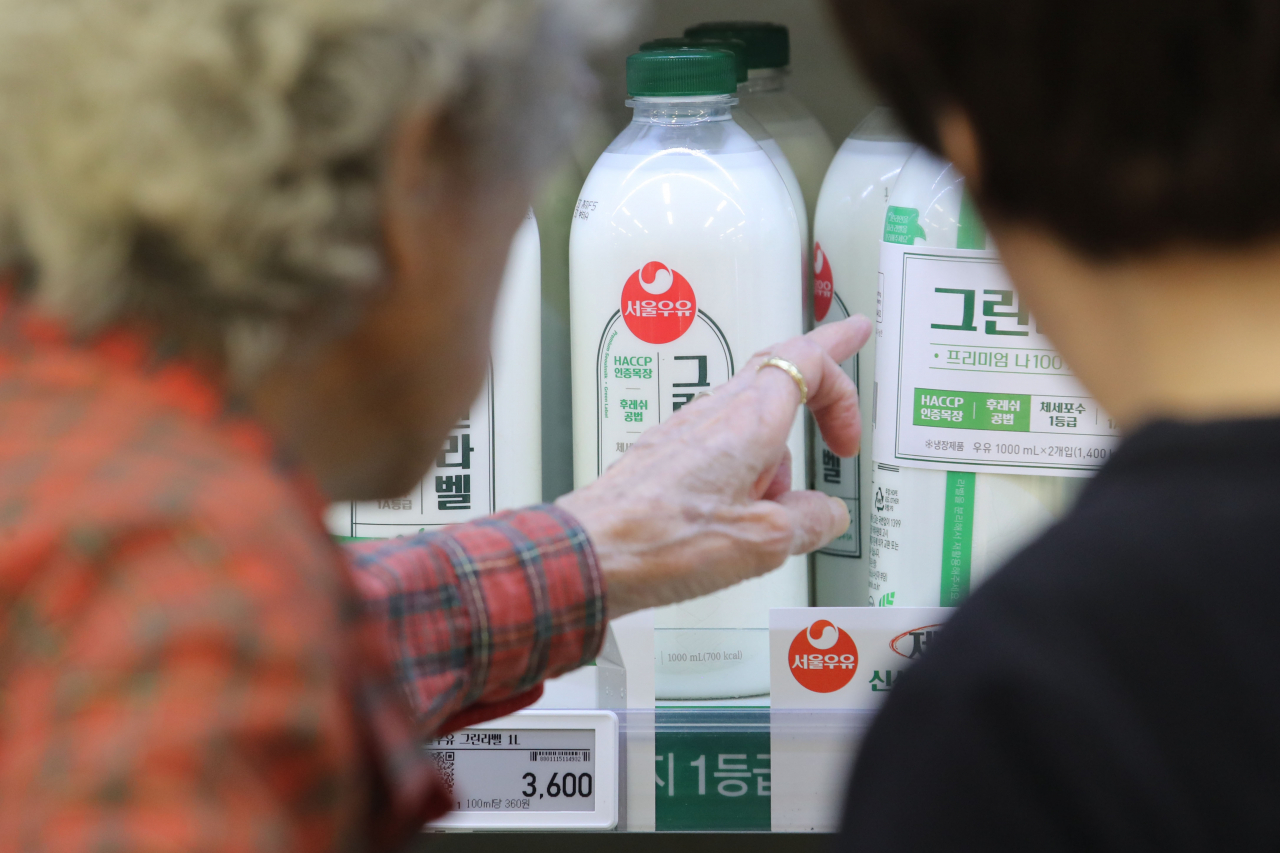[KH Explains] What’s behind unusual popularity of imported milk in Korea?
Despite mixed reactions to taste, nutritional value, consumers turn to lower price of imported milk
By Hwang Joo-young
Published : Jan. 31, 2024 - 15:29

Imported milk has been enjoying unexpected popularity in Korea recently, with the import volume more than tripling over the past three years alone.
According to the Korea Customs Service, imports of pasteurized milk totaled 3.74 metric tons, worth 41.5 billion won ($31.1 million), last year, up 32 percent from a year prior and a threefold surge from 2020.
Almost 90 percent of the imports came from Poland, followed by Australia (4.1 percent), Germany (3.9 percent) and France (2.2 percent).
Despite mixed opinions about its taste and nutritional value, many consumers are apparently drawn by the price benefits of imported milk, amid deepening “milkflation” here.
Currently, the flagship 1-liter milk products from the nation’s top three milk processing companies -- Seoul, Maeil and Namyang -- are priced at 3,200 won ($2.40) at local convenience stores. But milk from Poland’s Mlekovita sells at 2,100 won for the same amount, over 30 percent cheaper than the Korean rivals.
The import prices are likely to be further drop in coming years, as milk is set to become tariff-free from 2026 under free trade agreements with the US and European countries.
"Nowadays, customers often ask about the availability of imported pasteurized milk," said a 55-year-old owner of a local convenience store in Seoul. "In contrast to previous years when imported pasteurized milk wasn't as popular, I now need to check the inventory daily to ensure it stays in stock."
The unforeseen popularity of imported milk comes after months of price hikes from local milk producers.
While prices of raw milk remained relatively stable between 2016 and 2020 with an average annual increase of 0.2 percent, a notable surge started in 2021, which saw a 6.5 percent increase. In 2022 and 2023, the prices continued to increase, by 4.4 percent and 7.4 percent, respectively.
"In Korea, most dairy farms feed their milk cows with imported grains, particularly corn. When the Ukraine-Russia conflict broke out, global prices of corn more than doubled," said an official from the Korea Dairy Committee, the affiliate of the Ministry of Agriculture, Food and Rural Affairs responsible for negotiating raw milk prices for dairy farmers.
"The war also brought increases in other costs such as shipments, electricity and labor. The recent decision to raise the price of raw milk reflects these challenges."
Late last year, the committee decided to raise the price of raw milk to 1,250 won per liter to soothe the financial burdens of local farmers, facing backlash from consumers and milk companies. The price hikes of raw milk had a chain reaction, raising prices of milk products and other food items using milk.
Reactions to imported milk remain mixed among consumers and retailers.
"When I have a sip of imported pasteurized milk, it tastes like powdered milk. Sometimes, I wonder whether it contains fewer nutrients compared to Korean milk," said Jeong, a 29-year-old customer at a local convenience store. "I'm planning to add some to espresso, like in a latte, to mitigate the taste."
Consumer hesitancy has also led to local retailers being cautious about embracing imported milk, despite its cost advantages.
"Of course, the recent increases in milk prices have added pressure. However, we cannot fully embrace pasteurized milk as an alternative because consumers are still concerned about the taste difference," said an official of a specialty coffee chain who wished to be unnamed.
"If consumers perceive our products as less valuable in any aspect, it will adversely impact our brand reputation, which is a significant concern for us as a food and beverage company."
In the meantime, Park Jung-sook, a professor of food science and nutrition at Baekseok University, says that taste differences do not necessarily indicate differences in nutritional value.
“In Poland and Australia, for instance, farmers allow their livestock to graze, resulting in cows typically consuming hay, whereas in Korea, cows are primarily fed with feed,” Park said.
"When it comes to pasteurizing milk, certain nutrients such as vitamin B may be reduced. However, its protein and calcium content remain unaffected, and these are the key reasons why people consume milk daily."
Park added that if the prices of local milk continue to soar, there will come a point where people start to find imported milk preferable.



















